Well my photo of the Gyr Falcon taken at Baleshare, North Uist this week turned out to be very popular, my Tweet received 262 likes and 121 re-tweets! and both Rare Bird Alert and Birdguides used it in their weekly round up.

Well my photo of the Gyr Falcon taken at Baleshare, North Uist this week turned out to be very popular, my Tweet received 262 likes and 121 re-tweets! and both Rare Bird Alert and Birdguides used it in their weekly round up.

Hebridean Imaging is proud to have been one of the sponsors of this impressive publication! Hebridean Imaging also did the type-setting and organisation of the images – making this impressive tome ready for print.
It is now fresh from the printers and available for purchase at £10 + £3 P&P (A5 size and 472 pages). Not only does it cover the years 2011-13 it also incorporates a complete list of species ever recorded in the Outer Hebrides plus some of the more unusual 2014 records. Edited by Brian Rabbitts.

Walk: Nájera -> Cirueña 10 miles
Early morning coffee by the river before setting off on the road to Cirueña. I’d arranged to get my rucksack transported ahead, which I was a little nervous about – would I ever see my bag again?!
So, I travelled light but had my raincoat as it looked slightly overcast at first light. Wasn’t needed though as it turned into a marvellous, warm, sunny day. Many Corn Buntings singing in the fields 🙂
Refreshment stop in Azofra and then out across the vineyards and fields again. Lovely light and scenery – it looked almost painted – stripes of greens and browns all blending into one another.
A long slog up the hill into Cirueña, the new part of which is still as I remember it from 2013 – a souless ghost town with row upon row of modern houses all “se vende” (for sale). We’d decided on Albergue Victoria in the old village of Cirueña and it was absolutely lovely with a very warm welcome from the owners. And happily about 20 minutes later my rucksack arrived. Yay! Happy!
It’s amazing how good a shower and a change of undies can make you feel. Wandered around the village, took some photos, drank coffee and wine at the bar. Enjoyed a communal meal at the albergue which was delicious. This albergue is definitely going in my top 3 of favourites!
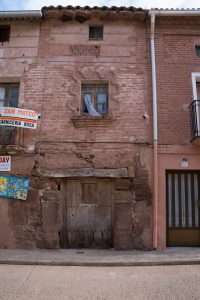
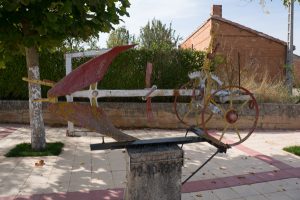
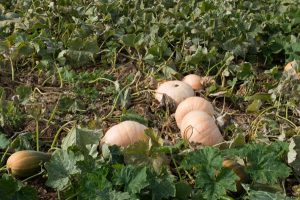
A recent photograph taken in Benbecula (18th December) has been very well received – it contains two rarities, both in the same shot – an Ivory Gull and a Cuvier’s Beaked Whale which sadly was washed up dead on the beach.
Ivory Gulls only turn up very infrequently here in Scotland. The Cuvier’s Beaked Whale was one of two found dead on Hebridean beaches this winter – the previous multiple stranding here occurred in 2008 (information from Outer Hebrides Biological Recording group). I had gone along to help to measure the whale and take a sample to be sent away for analysis by the Scottish Marine Animal Stranding Scheme. The Ivory Gull just appeared and landed on the whale while it was being measured! I believe it to be the same bird as had been seen the previous weekend.
So far the picture has been awarded Picture of the Week by BirdGuides, appeared in the Stornoway Gazette, accompanying an article written by Stuart Taylor of the RSPB and has also been requested by Birdwatch magazine and by the publishers of the magazine Dutch Birding.

Location: An Lanntair, Stornoway, Isle of Lewis 5th July to 30th August 2014 Artists: Matthew Dalziel and Louise Scullion
I don’t have much opportunity here in the Outer Hebrides for visiting art exhibitons, I have a trip up to the Isle of Lewis every couple of months to visit friends and always call in to An Lanntair in Stornoway – they generally have two exhibitions running, one in the main gallery space and one upstairs in the cafe/bar. As I’m unable to pick and choose what to visit I just take pot luck and visit anyway, I had vaguely heard that the latest exhibition was about birds but I didn’t have any details. Tumadh: Immersion was set up in the main gallery, one of the entrances was closed off just leaving a single entrance and the lights had been dimmed. Three walls at the far end of the space had screens in a variety of sizes set up on the walls in a seemingly random order. On each screen a different video was showing, the common theme being a seabird colony. Footage was a whole variety of shots from general views of the cliffs to much more intimate scenes of a single egg hatching, Fulmars pair bonding and single birds sitting on their nests. There were no natural sounds to go with the footage but there was a soundtrack which complemented the exhibition very well. I thought that the way the display had been set out was well thought out and the screens were on on and had ledges. I made a sketch of some of the screens.
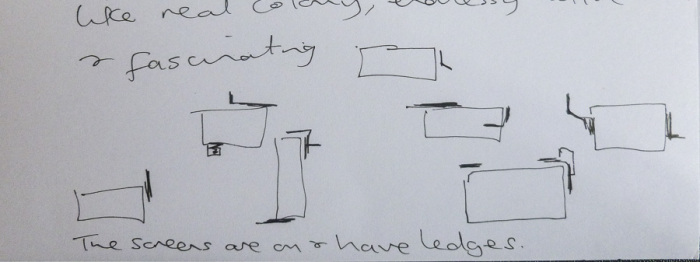
Just as watching a seabird colony for real there was a great sense of enjoyment in sitting and watching and just being there to witness the spectacle, not really knowing where to look next as the screens were constantly changing – one minute it would be a view from the top of a cliff of a White-tailed Sea Eagle drifting over the rocks looking for prey and the next it would be wildflowers swaying in the breeze, followed by row upon row of squabbling auks. I found it like a real colony, endlessly active and fascinating. Of the quieter moments the footage of a Fulmar turning it’s single egg, placed in a nest scaped out on three or four inches of a sheer cliff gave a sense of the fragility of the whole colony. I also felt a sense of sadness because these colonies, so fragile on the edge of the ocean, are under threat, something that we could lose for a variety of reasons – global warming and over-fishing.
Between 1985 and 1990, the sandeel stock around Shetland collapsed, leading to successive years of breeding failures of Arctic Terns, Arctic Skuas, Great Skuas, Black-legged Kittiwakes and Atlantic Puffins. Since then, sandeel availability and breeding success has fluctuated. (Mitchell et al, 2004)
On discussing the exhibition afterwards with a friend they asked “is that art then?” and my considered response was, well, yes if art is supposed to make you think about a subject, ask questions and invoke an emotional response then yes it was art. The artist’s statement from their website says
Our work explores mankind’s relationship with nature and how we interact with the ecology of the earth.
And I think that with Tumadh: Immersion they fulfilled that remit very well.
More info:- http://www.lanntair.com/content/view/1016/1 http://generationartscotland.org/exhibitions/tumadh-immersion-an-lanntair
References:- P. Ian Mitchell, Stephen F. Newton, Norman Ratcliffe and Timothy E. Dunn (Eds.). 2004. Seabird Populations of Britain and Ireland: results of the Seabird 2000 census (1998-2002). Published by T and A.D. Poyser, London. Available online at: http://jncc.defra.gov.uk/pdf/Complete_seabird_pops_exec_summary.pdf
The very first online courses that I participated in were by Cathy Johnson so I was looking forward to learning a whole lot more from this lovely lady, especially as a lot of her drawing is bird and nature orientated. Cathy Johnson’s website Cathy Johnson’s blog Cathy demonstrated techniques for sketching birds – both from life and using photographs – then homework was to do our own bird sketch. I chose a House Sparrow, it turned out OK(ish) it was a little bit out of shape. Maybe i’m just picky when it comes to bird art – I think it stems from knowing birds so well. Anyway here is my homework, followed by some links to a couple of great bird artists.
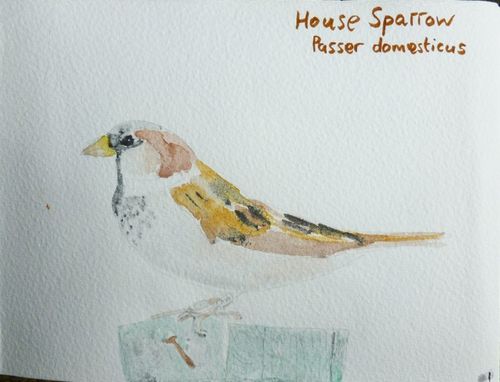
My Lapwing turned out a little better
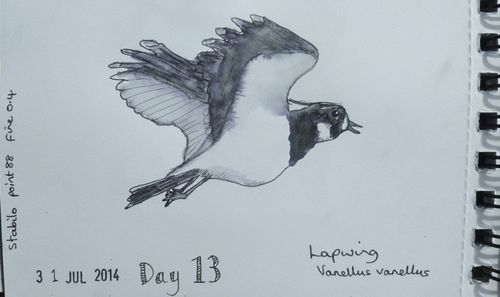
Both of these birds were drawn from my own photographs. Part 2 of Cathy’s homework was to upload a page from our nature journal. I submitted my seaweed page

I love the lovely loose watercolour work of wildlife artist Darren Woodhead, I first saw his work at the UK Bird Fair in 2011, held annually at Rutland Water. Darren is based in Scotland and his website is: www.darrenwoodheadartist.co.uk Another artist I greatly admire is The Artist that I mention now and again who lives next door. Bill Neill has lived here in the Hebrides for over 30 years and is an amazing all round naturalist. He uses mainly watercolour but sometimes acrylics. Bill’s website is: www.william-neill.co.uk Books I recommend for drawing birds:-